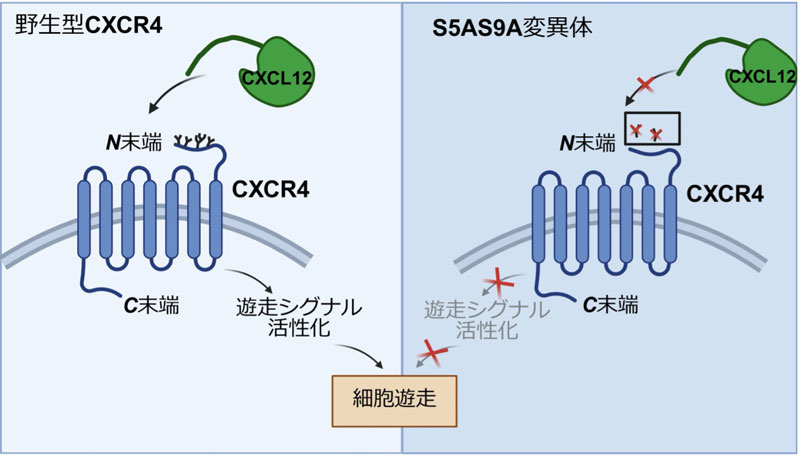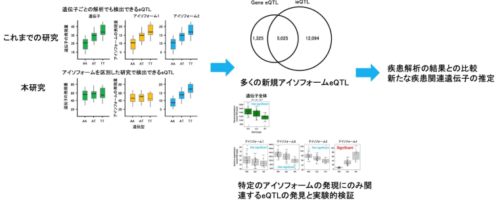2025-05-09 京都大学

CXCR4-CXCL12結合メカニズム:(左)野生型CXCR4のN末端にリガンドCXCL12が結合して、下流の遊走シグナルが活性化され、細胞の遊走が促進される。(右)CXCR4のN末端のO型糖鎖付加部位を欠損させた場合、リガンドCXCL12と結合が弱くなり、下流の遊走シグナルが活性化されない。そのため、細胞の遊走が促進されなかった。
<関連情報>
- https://www.kyoto-u.ac.jp/ja/research-news/2025-05-09
- https://www.kyoto-u.ac.jp/sites/default/files/2025-05/web_2505_Asano-b320d9920ebd43843ece410358d0f8c4.pdf
- https://academic.oup.com/stmcls/advance-article-abstract/doi/10.1093/stmcls/sxaf025/8126919
造血幹前駆細胞の細胞遊走と骨髄ホーミングにおけるCXCR4の潜在的O-結合型グリコシル化部位の重要な役割 Critical role of the potential O-linked glycosylation sites of CXCR4 in cell migration and bone marrow homing of hematopoietic stem progenitor cells
Xuchi Pan , Chie Naruse , Tomoko Matsuzaki , Ojiro Ishibashi , Kazushi Sugihara , Hidetsugu Asada , Masahide Asano
Stem Cells Published:04 May 2025
DOI:https://doi.org/10.1093/stmcls/sxaf025
Abstract
The C-X-C chemokine receptor type 4 (CXCR4) and its ligand, C-X-C motif chemokine ligand 12 (CXCL12), are critical for the homing of hematopoietic stem progenitor cells (HSPCs) to bone marrow (BM). Our previous study revealed that carbohydrate chains on HSPCs are vital in the homing and engraftment of HSPCs. However, the relationship between the glycosylation of CXCR4 and HSPCs homing remains unclear. In this study, we analyzed the glycosylation sites of the N-terminal 38 amino acids of mouse CXCR4, which is indispensable for CXCL12 binding. Among these, simultaneous mutations of possible glycosylation sites, Serine-5 and Serine-9 of mouse CXCR4 lost cell migration activity through CXCL12 in cultured cells and mouse HSPCs. Furthermore, Serine-5 and Serine-9 mutations in HSPCs caused a deficiency in the homing to the BM. Our findings suggest that the glycosylation of mouse CXCR4 is essential for homing HSPCs to the BM, which can be used to screen cord blood HSPCs suitable for transplantation.


